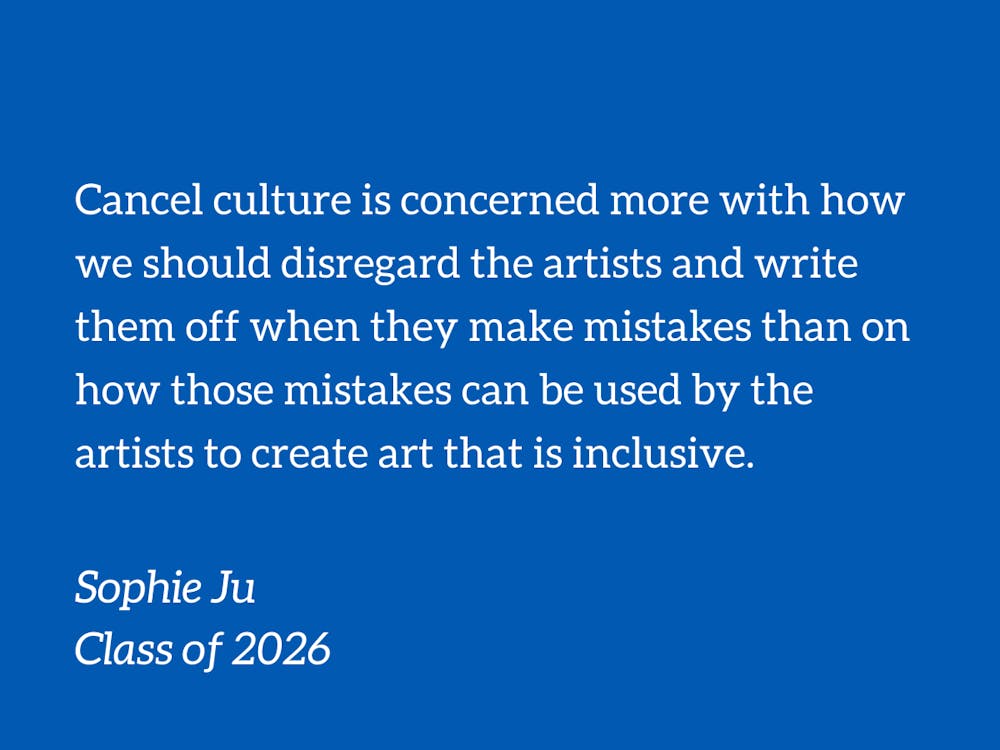The question of whether it is possible to dissociate the artist from their work has been debated for a long time. Some people have become famous and have succeeded in their artistic work after positive reviews of their behavior. On the other hand, other well-known actors, musicians, artists or athletes have had their careers hampered by controversies.
Such controversies – christened cancel culture – lead people to judge artistic works by their behavior. Cancel culture is real, ubiquitous and powerful, focusing on themes of race, gender, sexuality and other related concerns. Even though positive critical reviews about an artist’s behavior can bolster their artistic accomplishments, people should treat artists as individuals who have lived apart from their work.
One of the reasons why we should separate the artist from the art is that even artists have shortcomings. Like any other human being, an artist can err, and we cannot be severely judgmental of every person that falls into error.
Cancel culture is concerned more with how we should disregard the artists and write them off when they make mistakes than with how those mistakes can be used by the artists to create art that is inclusive. Unrelenting criticism ignores the artist’s limitations and weaknesses and instead demands perfection from them.
Perhaps Kevin Hart’s response to the canceled battalion buttresses this thought. He asks, “When did we get to a point where life was supposed to be perfect? Where people were supposed to operate perfectly all the time?” When people start seeing artists as human beings, they’ll be able to treat them better. They’ll see them for who they are and review their behavior not on the basis of their art but on the basis of their humanity.
They’ll be less severe in how they judge artists’ work when mistakes are made.
It should be noted, also, that there are works of art that are inspired by the artist’s experience. For example, the themes in the Harry Potter books are so entwined with J.K. Rowling's wicked and misguided worldview that it is virtually impossible to distinguish the two from each other. Since canceling the artist based on their worldview would mean the reception to their art will suffer, cancel culture has made artists become reluctant to express themselves. They fear that the things they say will come back to bite them. Such fear stifles creativity, eventually leading to the death of art. Comedians, singers or painters who should be fusing contemporary issues with their work become boring, and art stops functioning as the social mirror it ought to be.
Still, some people insist that the art and the artist are a package deal. Ignoring the personal background of an artist is a disservice to their creations. It’s true that there is a connection. But assuming that there is always such a connection in every aspect of a person and the work is wrong. For this reason, the true disservice is to judge the value of a creation solely on the artist’s background.
An artist who makes mistakes still has art with intrinsic value, benefiting entire communities or cultures. For instance, when Kendrick Lamar launched his album and frequently used the F-slur in one of his songs, there was much heated discussion. He was entirely mistaken in using the F-slur, but as an artist, he still had a wide-reaching impact on society. Similarly, one can respect the late Michael Jackson because of how he impacted pop music and the inclusion of black musicians in mainstream media despite his personal weaknesses, opinions, worldviews and associations.
While these artists may engage in their horrific behavior, the art they produce today may serve as an example for others to produce outstanding work in the future. Some would refer to this process as a cycle, but if we keep growing and evolving, it will resemble an evolution. Good art should, therefore, be judged due to its value and not the value of the artist.
Good behavior does not necessarily imply good art. A decent person does not necessarily create good art, just as wonderful art does not automatically make the creator a decent person.
Most of the time, the relationship between an artist and their art is usually not a matter of concern until the artist is involved in a scandal. While positive opinions about an artist can improve their artistic appeal, letting one’s negative opinions of an artist interfere with one’s opinion of a work of art has devastating impacts.
This doesn’t mean that audiences cannot disagree with artists, but the focus of their criticisms should be on the art rather than the artist because the two may not be necessarily related. Good behavior doesn’t mean good art, and criticizing an artist’s lifestyle will breed fear and stifle creativity. Separate the art from the artist.
Sophie Ju is a Trinity first-year. Her column typically runs on alternating Mondays.
Get The Chronicle straight to your inbox
Sign up for our weekly newsletter. Cancel at any time.

